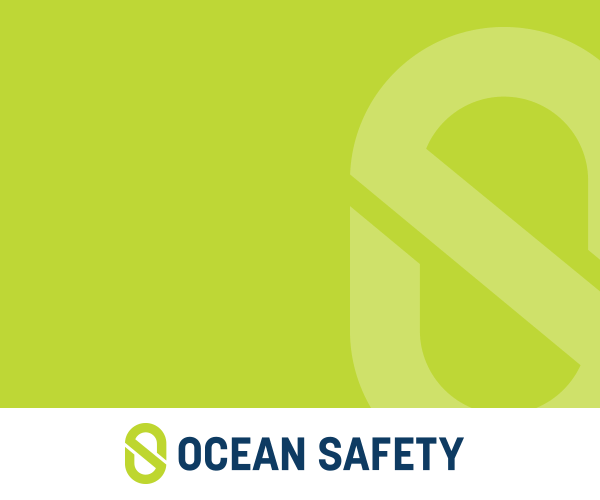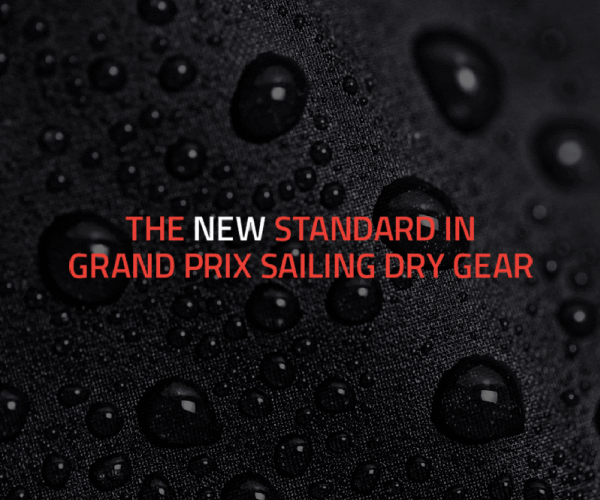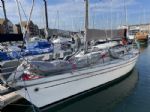

-(1)-202408140552.gif)










Boats for sale
| Laser 28 - Excellent example of this great design Hamble le rice |
 |
| Rossiter Pintail Mortagne sur Gironde, near Bordeaux |
 |
List classes of boat for sale |
Quiz Question |
Post Reply 
|
Page <1234> |
| Author | ||
Brass 
Really should get out more 
Joined: 24 Mar 08 Location: Australia Online Status: Offline Posts: 1151 |
 Post Options Post Options
 Quote Quote  Reply Reply
 Topic: Quiz Question Topic: Quiz QuestionPosted: 07 Dec 12 at 4:16am |
|
Doesn't an approach following the Section A, B, C, and D structure of Part 2 pretty much get you there?
Section A - Right of Way Rules
One boat is always the Right of Way boat, and the other is the Keep Clear boat. The starting point of any rules situation is Am I the Right of Way boat?
Section B - General Limitations [on Right of Way]
Starts with rule 14: If you are keeping clear you will avoid contact. If you are the Right of way Boat you must avoid contact if reasonably possible.
Rules 15 and 16 usually follow on from rule 14, because they are usually only broken when there is contact.
Section C - [Limitations on Right of Way] At Marks and Obstructions
Special rules for going round corners.
Dummies version: Regardless of whether you are Right of Way or not, don't run anybody off the road; don't run anybody into the wall.
Once you move up from the dummies version, you just have to try to learn the rule, practice and apply it.
Section D - Other Rules - Extra Special, unusual and weird situations
Some of which you should be able to remember because they are so weird, and most of which won't trouble you because they are unusual.
|
||
 |
||
JimC 
Really should get out more 

Joined: 17 May 04 Location: United Kingdom Online Status: Offline Posts: 6662 |
 Post Options Post Options
 Quote Quote  Reply Reply
 Posted: 07 Dec 12 at 7:08am Posted: 07 Dec 12 at 7:08am |
|
|
Agree with Brass... the original post/quiz creates confusion because it talks about "keep clear" requirements changing, but that's a definition with a specific meaning so to talk about the requirements changing makes the rules sound more complicated than they actually are.
The basic ROW rules are pretty straightforward, and provided you don't push things in close quarters situations they are easy enough to deal with. All the complications come in close quarters situations where boats may be changing course rapidly. If in doubt don't get into those situations! This is the major difference between Col Regs and RRS and why RRS are so much more complex. Colregs say "don't get into close quarters situations": RRS give you details of how to deal with them if you have studied adequately. Brass' summary of how the Sctions interact is really neat, and is a very useful study aid I think... |
||
 |
||
Rupert 
Really should get out more 
Joined: 11 Aug 04 Location: Whitefriars sc Online Status: Offline Posts: 8956 |
 Post Options Post Options
 Quote Quote  Reply Reply
 Posted: 07 Dec 12 at 9:25am Posted: 07 Dec 12 at 9:25am |
|
|
Not sure the OP was using the words "keep Clear" as in the rules definition - more in the "keep out of the way" sense. From that point of view, whether you are giving mark room or genuinely "keeping clear" makes no odds in the spirit of this thread - they are still situations where the port boat has to be avoided, and not the other way round.
What I find interesting is the number of situations that are listed, yet what short time periods they tend to apply for before normal service prevails. |
||
|
Firefly 2324, Puffin 229, Minisail 3446 Mirror 70686
|
||
 |
||
Brass 
Really should get out more 
Joined: 24 Mar 08 Location: Australia Online Status: Offline Posts: 1151 |
 Post Options Post Options
 Quote Quote  Reply Reply
 Posted: 07 Dec 12 at 12:18pm Posted: 07 Dec 12 at 12:18pm |
|
Firstly, regardless of what OP had in mind originally, obligations to keep clear, give room, give mark-room, avoid and not interfere with are not all the same. If you tell a sailor that when they are on starboard tack a boat on port tack must keep clear of them, but if they are changing course they must keep clear of the port tacker, you will seriously confuse them. You have to make some sort of semantic differentiation. What I think JimC is agreeing with is that there needs to be some sort of structure and logic to the rules to assist recollection, understanding and application, otherwise the sailor will have to learn 12 'rules of exception' off by heart and then try to apply them, without any logical structure to help them.
Agree, After all, Part 2 is called When Boats Meet, and boats spend a lot of time sailing without meeting. All the moreso, most times boats 'meet' the Section A Right of Way rules work just fine, and the Limitations, and Extra Special rules apply even more rarely. Rules 18 and 19 get a bit more use, because boats tend to converge at marks and obstructions.
|
||
 |
||
JimC 
Really should get out more 

Joined: 17 May 04 Location: United Kingdom Online Status: Offline Posts: 6662 |
 Post Options Post Options
 Quote Quote  Reply Reply
 Posted: 07 Dec 12 at 2:10pm Posted: 07 Dec 12 at 2:10pm |
|
Most probably - but I submit that there lies insanity... It seems to me that a substantial number of problems people have with the rules is that they read the text of the rules, but don't read the definitions, and without an understanding of the definitions the rules are pretty much impossible to understand in detail. And if you use "defined" phrases in a conversation where the context is the rules, but with a meaning that differs from the definition, then I think the potential for confusion and misunderstanding multiplies enormously. Think of it: if you were attempting to explain an aspect of the rules to a beginner, and in that conversation you were sometimes using the phrase "keep clear" to the RRS definition and sometimes with a generic meaning of "do not collide with", then unless that beginner was a great deal smarter than I am I suggest they'd be bound to come out more confused than they were to start with... |
||
 |
||
RS400atC 
Really should get out more 
Joined: 04 Dec 08 Online Status: Offline Posts: 3011 |
 Post Options Post Options
 Quote Quote  Reply Reply
 Posted: 07 Dec 12 at 6:48pm Posted: 07 Dec 12 at 6:48pm |
|
Colregs 12 a) 1).when each has the wind on a different side, the vessel with the wind on the port side shall keep out of the way of the other. 11) when both have the wind on the same side, the vessel which is to windward shall keep out ofthe way of ther vessel which is to leeward. 111) If a vessel with the wind on the port side sees a vessel to windward and cannot determine with certainty whether the the other vessel has the wind on the port or strboard side, she shall keep out of the way of the other. |
||
 |
||
Brass 
Really should get out more 
Joined: 24 Mar 08 Location: Australia Online Status: Offline Posts: 1151 |
 Post Options Post Options
 Quote Quote  Reply Reply
 Posted: 07 Dec 12 at 8:09pm Posted: 07 Dec 12 at 8:09pm |
|
OK, thank you, my omission.
|
||
 |
||
gordon 
Really should get out more 
Joined: 07 Sep 04 Online Status: Offline Posts: 1037 |
 Post Options Post Options
 Quote Quote  Reply Reply
 Posted: 10 Dec 12 at 8:14am Posted: 10 Dec 12 at 8:14am |
|
|
Brass said :
"Rules 15 and 16 usually follow on from rule 14, because they are usually only broken when there is contact."
I would disagree. A ROW of boat does not give room if she does not give the space the other boat needs n the existing conditions while manoeuvring promptly in a seamalike way. If the keep clear boat, after the ROW boat acquires right of way or changes course, is obliged to manoeuvre in an unseamalike way then ROW boat has broken one of the two rules (15, 16). A crash tack, a crash gybe, a near miss that owes as much to good luck as to good boat-handling, hitting a mark, an "emergency" luff or bear away... all these can be considered unseamanlike. To quote the TR Call Book "General Principles for umpire decisions (not authorative except for team racing, but providing guidance) "... any manoeuvre that puts aboat or crew at risk of damage is unseamanlike." damage does not necessarily result from contacts between boats. Fortunately for all our insurance premiums, boats can break these rules without going to contact. |
||
|
Gordon
|
||
 |
||
Brass 
Really should get out more 
Joined: 24 Mar 08 Location: Australia Online Status: Offline Posts: 1151 |
 Post Options Post Options
 Quote Quote  Reply Reply
 Posted: 10 Dec 12 at 8:34pm Posted: 10 Dec 12 at 8:34pm |
|
|
Perhaps Gordon and I will have to disagree, or perhaps I can persuade him that most rule 15/16 breaches are established by by contact between the boats..
Have a look through your old protest notes and published protest decisions: I think that's what you will find. I am well aware of the theoretical possibility that contact might only be avoided by a ) the give way boat being compelled to manoeuvre in an unseamanlike manner, b ) only by the right of way boat taking action to avoid contact, or c ) only by a miraculous close shave, in which case rule 15/16 will have been broken without there being contact. My observation is that these circumstances are in the minority of cases. I particularly dislike the language about 'crash tack' and 'crash gybe'. I don't think there is any such thing. Boats can and do tack quickly, and gybe quickly. Competitors spend hours training to do exactly this. Get your stopwatch out and take a look at how quickly boats can tack or gybe when they want to: that's how quickly they can tack or gybe when they are obliged to do so 'promptly'. Likewise I would have huge difficulty in differentiating between an 'emergency' luff or bear away, and just executing such a simple and relatively unrisky manoeuvre quickly or promptly. Certainly the 3 or 4 seconds it takes a Laser to to tack, might be (minusculely) less than a fully trapped 505, and appreciably less than, say an IOR Maxi with runners and the whole crew hiked on the rail (or the sail training ship I recently read about where the skipper claimed that his tacking process occupied nine minutes). Certainly a boat with a pole and sym spinnaker will take longer to gybe than a mono sail or an assy boat, but competent crews don't take all that long. Of course, it depends on the existing wind and wave conditions, partiicularly gybes, where, in heavy conditions, it might indeed be seamanllike to wait for wave conditions before gybing. On the other hand, in light conditions, tacking all-standing with the headsail aback is a perfectly seamanlike way of heaving to. I am also well aware of Case 103 which sets the standard to be expected as that of a 'competent, but not expert, crew of the appropriate number', and I am happy to give a bit of leeway about 'competent' depending on the level of the event. I do quite like the guidance from the TR call book about putting a boat or crew at risk of damage. My bottom line is that I do believe that most rule 15/16 breaches result in contact and that rule 14 thus forms a useful logical link between the Section A Right of Way rules and Section B Limitations giving room to keep clear rules. |
||
 |
||
ohFFsake 
Far too distracted from work 
Joined: 04 Sep 08 Location: United Kingdom Online Status: Offline Posts: 219 |
 Post Options Post Options
 Quote Quote  Reply Reply
 Posted: 10 Dec 12 at 9:08pm Posted: 10 Dec 12 at 9:08pm |
|
|
Thanks for some great replies people. In terms of the original question, how about:
"Under what circumstances might a starboard tack boat be penalised for failing to avoid contact with a port tack boat?" Not perfect but hopefully good enough to get my original point across. Which was an attempt to stimulate some of our sailors to think a bit harder about the rules - eg being close-hauled on starboard doesn't mean you can stop looking out for other boats. |
||
 |
||
Post Reply 
|
Page <1234> |
| Forum Jump | Forum Permissions  You cannot post new topics in this forum You cannot reply to topics in this forum You cannot delete your posts in this forum You cannot edit your posts in this forum You cannot create polls in this forum You cannot vote in polls in this forum |
Bulletin Board Software by Web Wiz Forums® version 9.665y
Copyright ©2001-2010 Web Wiz
Change your personal settings, or read our privacy policy
Copyright ©2001-2010 Web Wiz
Change your personal settings, or read our privacy policy











 Printable Version
Printable Version Delicious
Delicious Digg
Digg Facebook
Facebook Furl
Furl Google
Google MySpace
MySpace Newsvine
Newsvine reddit
reddit StumbleUpon
StumbleUpon Twitter
Twitter Windows Live
Windows Live Yahoo Bookmarks
Yahoo Bookmarks Topic Options
Topic Options